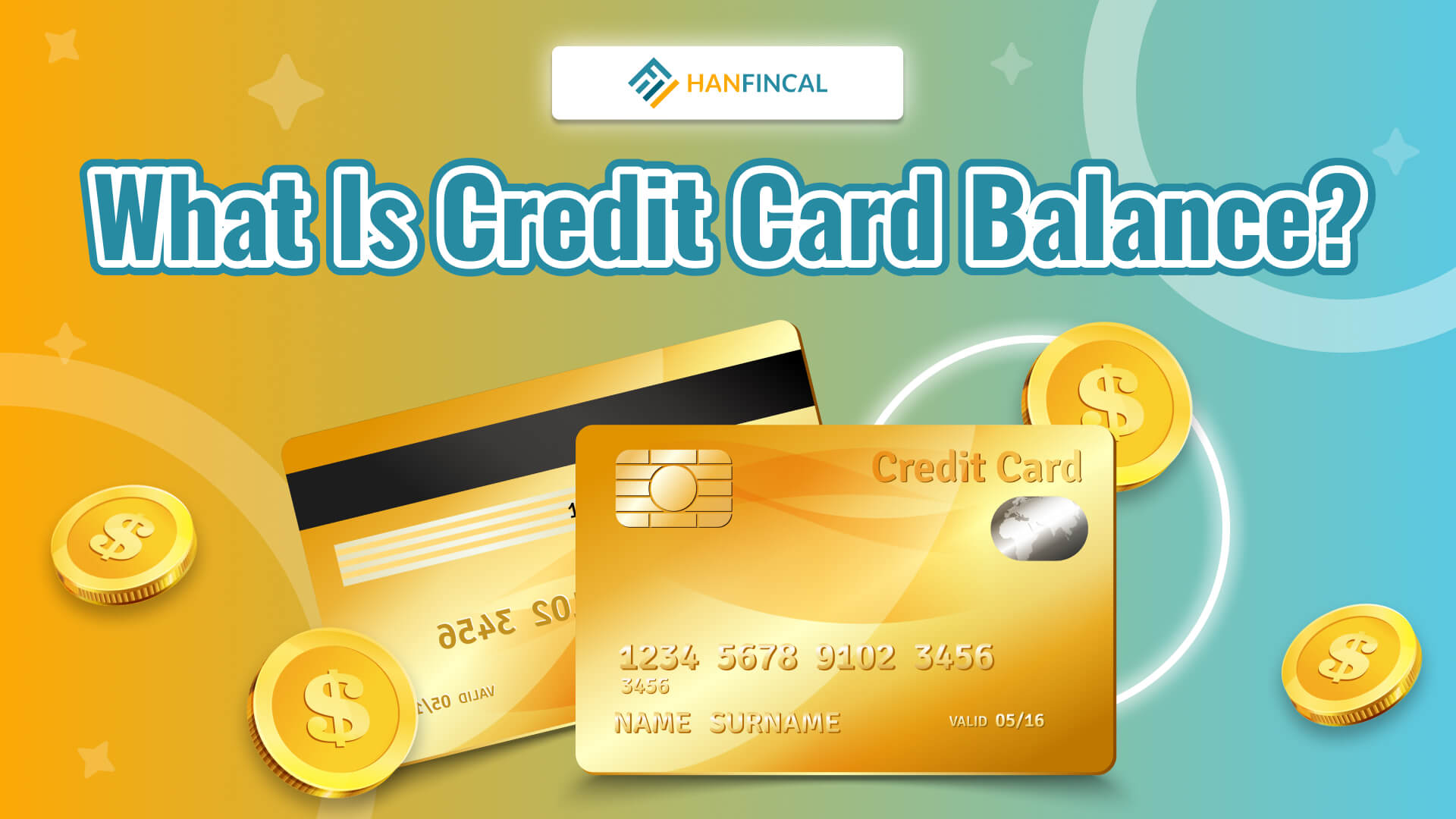What is a credit card balance? At first glance, it appears to be a simple question. However, if you delve into it, you will be perplexed as to what it is. If you are a newbie to using credit cards or have never heard of these definitions, you can find everything from Hanfincal today.
1. What is a credit card balance?
A credit card balance is the total amount of money owed to a credit card company by a cardholder. In other words, this balance refers to the amount of credit on your card that has been used. This includes any charges you’ve made, convenience checks you’ve used, balances you’ve transferred, or cash advances you’ve received, such as from an ATM.
If you owe money, it could be a positive number, its negative counterpart if you’ve paid more than you had to pay or zero if you’ve paid off the balance entirely. Furthermore, it rises when cardholders make purchases and falls when they make payments.
Moreover, at the end of the billing cycle, a remaining balance is carried over to the following month’s bill and is subject to interest. Credit card balances also play an essential role in determining a person’s credit score.
2. Statement balance vs. current balance
When using your credit card, you will frequently come across two definitions: statement balance and current balance. So, what exactly are they?

Statement balance vs. current balance
2.1. Statement balance
Statement balance is your total balance at the end of your billing cycle. If you want to avoid additional interest charges, you must pay the statement balance in full by the due date on your account.
A credit card statement summarizes how you used your credit card during a billing period, how much you paid the previous month, how much you need to pay, and the date your repayment must be received to avoid fees. Your monthly credit card statement will be mailed to you at least 15 days before your credit card payment is due.
2.2. Current balance
The amount you owe right now is your current balance. This is a running total of all new charges, payments, fees, and credits posted to your account since the billing cycle ended. If you have purchased with the card, transferred a balance, taken a cash advance, made a payment, or been charged fees or interest since your most recent statement, this number may differ from the statement balance.
3. How is a credit card balance calculated?
A credit card balance calculation is not a difficult task; credit card companies simply add up all money charged to your accounts. These can be all charges you make, accumulated interest, foreign transaction fees, late payments, annual fees, cash advances and balance transfers).
Your balance may fluctuate month to month depending on whether you pay your bill fully and on time.
4. Does having a credit card balance affect your credit score?
Credit card balance directly impacts your credit score and, therefore, whether you can get approved for a new credit card or a loan. Your credit score will fluctuate as the credit card balance reported to the credit bureaus changes.
Your credit utilization ratio compares how much you’re using to your available amount. Lower credit utilization is preferable because it demonstrates that you can use credit responsibly and have not overextended yourself with high credit card balances. Given the Consumer Financial Protection Bureau, experts recommend keeping your credit utilization below 30% of your available credit.

Does having a credit card balance affect your credit score?
If you use your card frequently and can afford to make an early payment, paying down your current balance can help reduce your credit utilization ratio. This, in turn, can help you improve your score.
Aside from keeping your credit card utilization below 30% to protect your credit score, you can work hard to improve your credit score in your unique way. One of the simplest and quickest methods is to obtain a free score from an online center. This is the best suggestion for those who need to improve their score quickly. Do you want these?
5. What does it mean to carry a credit card balance?
If you don’t repay your total balance by the due date on your statement, the amount you still owe is carried over to the next billing cycle. When you carry this balance, the high-interest rates that credit cards typically charge can make your purchases significantly more expensive over time.

What does it mean to carry a balance?
6. Should I carry a credit card balance?
Carrying a balance on your credit card can lower your credit score. The unpaid balance plus interest is added to your next month’s balance, raising it above what it would have been otherwise. A higher balance indicates a higher credit utilization ratio, the percentage of available credit that you’ve borrowed. A high credit utilization ratio can result in a lower credit score, so keeping your balances under 30% of your total credit limit is often advised.
In an ideal case, you’d only carry a credit card balance when necessary, such as when paying off consolidated debt with a credit card with a 0% APR. You’re not doing any favors if you’re piling up debt with no end goal.
7. What is a negative credit card balance?
When your credit card balance falls below zero, you have a negative credit card balance. It is reflected as a negative account balance. Why does this happen? This is because your credit card company owes you money rather than you owing them money. Typically, this occurs when you have overpaid your outstanding balance or returned the credit to your account.
You can request that your credit card company issue you a check for a negative balance or deposit the funds owed to you in your bank account. Alternatively, you can keep charging the card, which will offset the negative balance.
8. How to check your credit card balance?
Here are three common methods for checking your credit card balance:
- Sign in to your online account or download the mobile app: The quickest and easiest way to check a credit card balance is to log in online or through the card issuer’s mobile app. You need to create an account on the card issuer’s portal and log in whenever you want to check the balance, make a payment, ask a question, or get help.
- Paper statements are typically mailed near the end of a billing cycle before the next payment is due. This allows cardholders sufficient time to review the charges, check the balance, and make a payment.
- Check your balance over the phone: Look on your credit card or statement for the phone number. Prepare to provide account information and verify your identity.
What is a credit card balance? It is the total amount of money you spend on your credit card but do not repay to the credit card company. You should pay close attention to various types of credit card balances and what can have the greatest impact on your credit score. Hanfincal will guide you through the following steps.
==> Read More:




